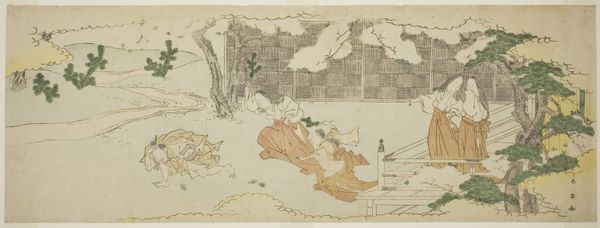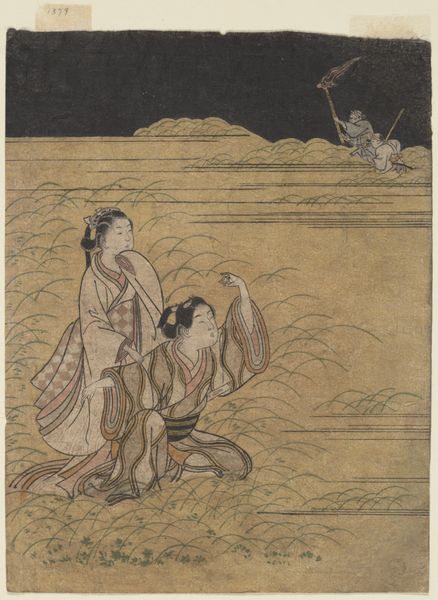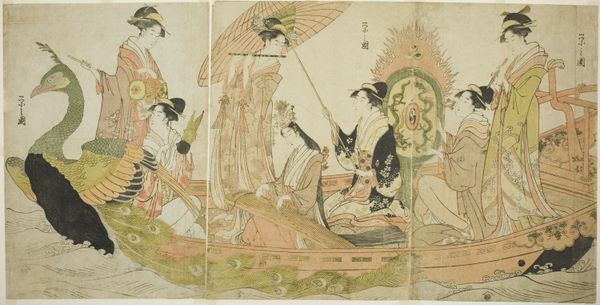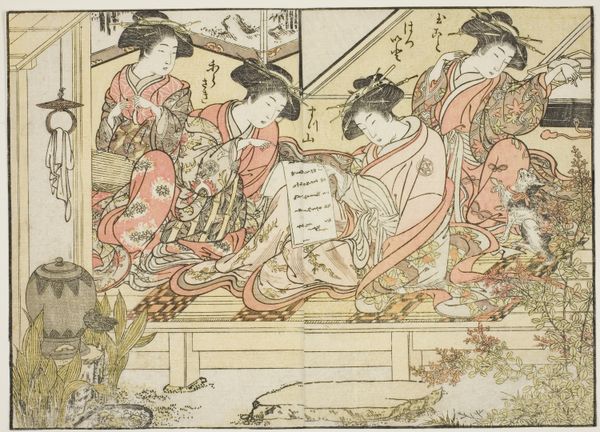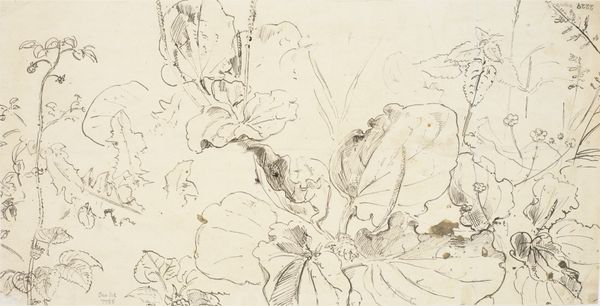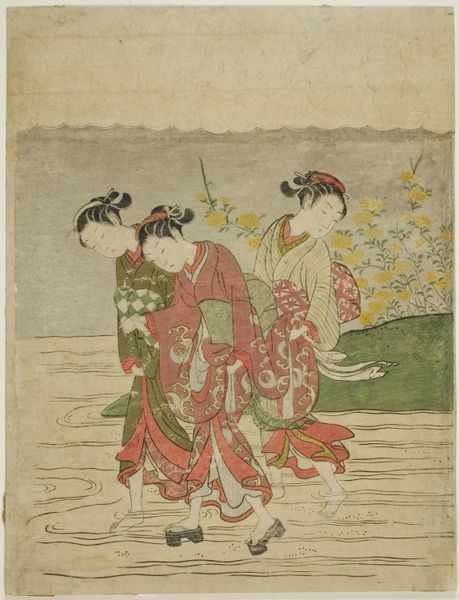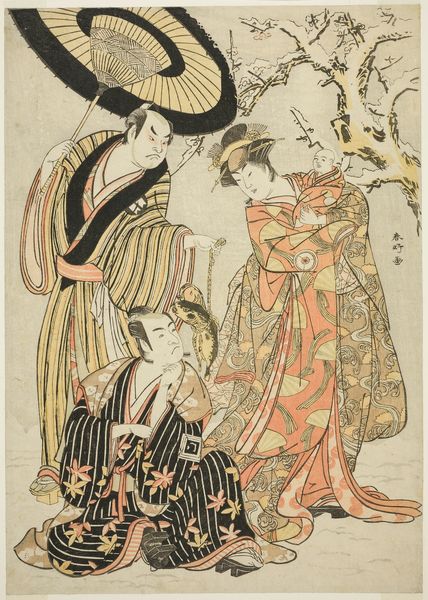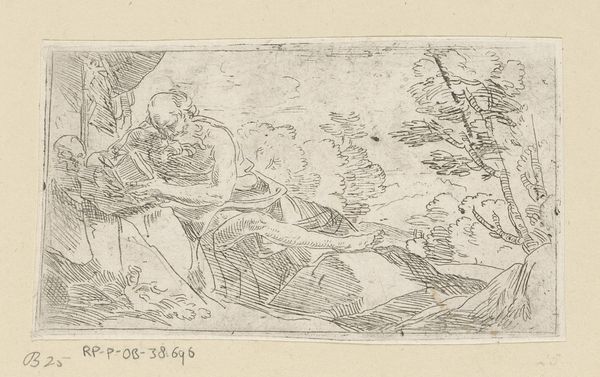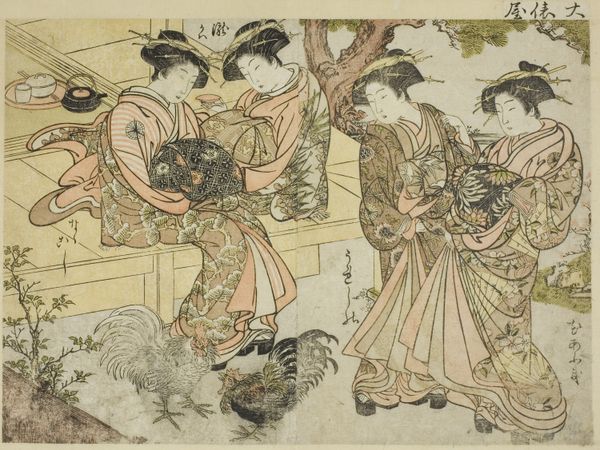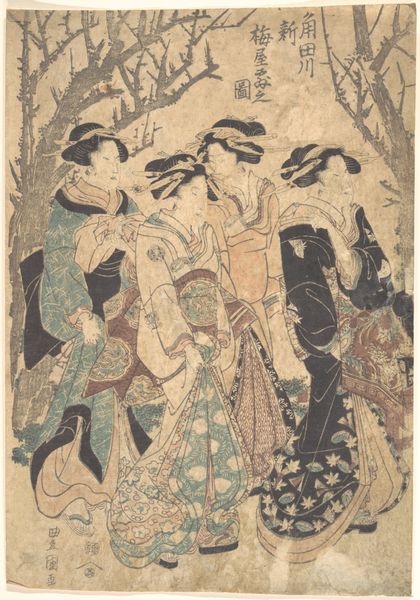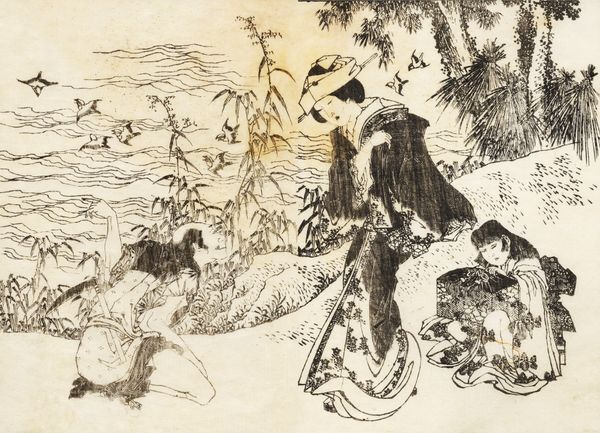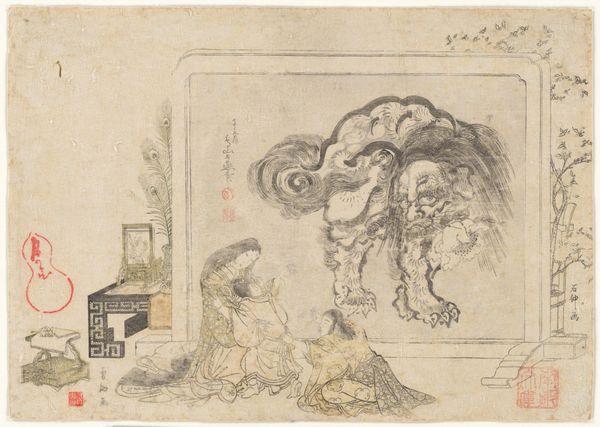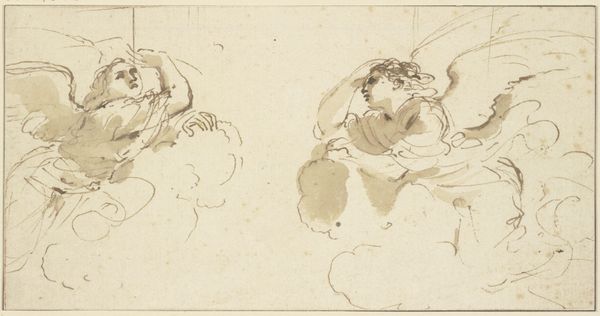
Yamauba Watching Kintaro Wrestle a Boar late 18th/early 19th century
0:00
0:00
print, woodblock-print
#
narrative-art
# print
#
asian-art
#
landscape
#
ukiyo-e
#
figuration
#
woodblock-print
Dimensions: 20.5 × 31.4 cm
Copyright: Public Domain
Curator: Kubo Shunman created this striking woodblock print titled "Yamauba Watching Kintaro Wrestle a Boar" sometime in the late 18th or early 19th century. Editor: The energy is palpable. The central figure, Kintaro, wrestling that enormous boar, just leaps off the page. The colors are so muted, yet somehow it's brimming with life. There's an almost frantic quality to the movement, what do you make of that? Curator: The narrative is everything here. We have Yamauba, the mountain witch, a legendary figure, observing Kintaro, a child prodigy of Japanese folklore, displaying his incredible strength. The image speaks to the deep-rooted cultural fascination with stories of supernatural strength and legendary figures within society at that time. Editor: Absolutely. Looking at it from a contemporary perspective, I see layers of power dynamics playing out. You've got Yamauba, a woman, literally towering over this scene. She embodies wild, untamed feminine power. Her gaze is interesting -- a maternal curiosity, maybe a bit of calculation? And Kintaro’s victory is the perfect patriarchal heroic image, and seems quite a fraught spectacle if we unpack that history. Curator: And it’s critical to remember that ukiyo-e prints like these weren't viewed as "high art" initially. They were popular culture, accessible and enjoyed by a wide range of the public. They depict daily life, urban legends, and acted as an important form of visual communication during that era. Editor: That context changes everything, doesn't it? Makes me think about how stories like this shape cultural expectations. Kintaro wrestling the boar...what is this communicating? It reinforces ideas about masculinity, dominance, and humanity’s role of supposed dominance over nature. How were such works consumed by various segments of society? Curator: Indeed, it speaks to both popular ideals and, potentially, simmering tensions and concerns surrounding societal structures. Ultimately, the enduring appeal is a reflection of our own interest in those ideals that underpin much of society’s thinking. Editor: Agreed. It makes you consider what stories we are choosing to tell now. The intersection of legend and ideology here feels startlingly relevant to contemporary power struggles. Thank you for sharing that information!
Comments
No comments
Be the first to comment and join the conversation on the ultimate creative platform.
